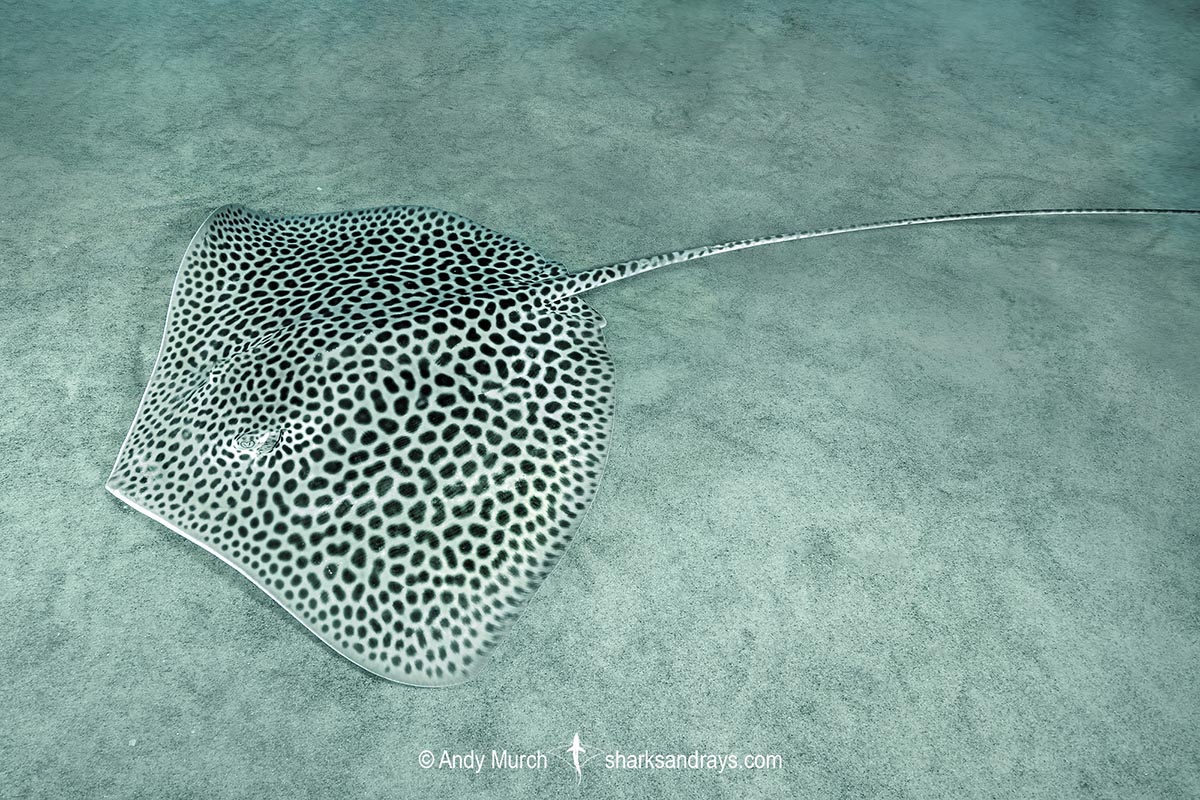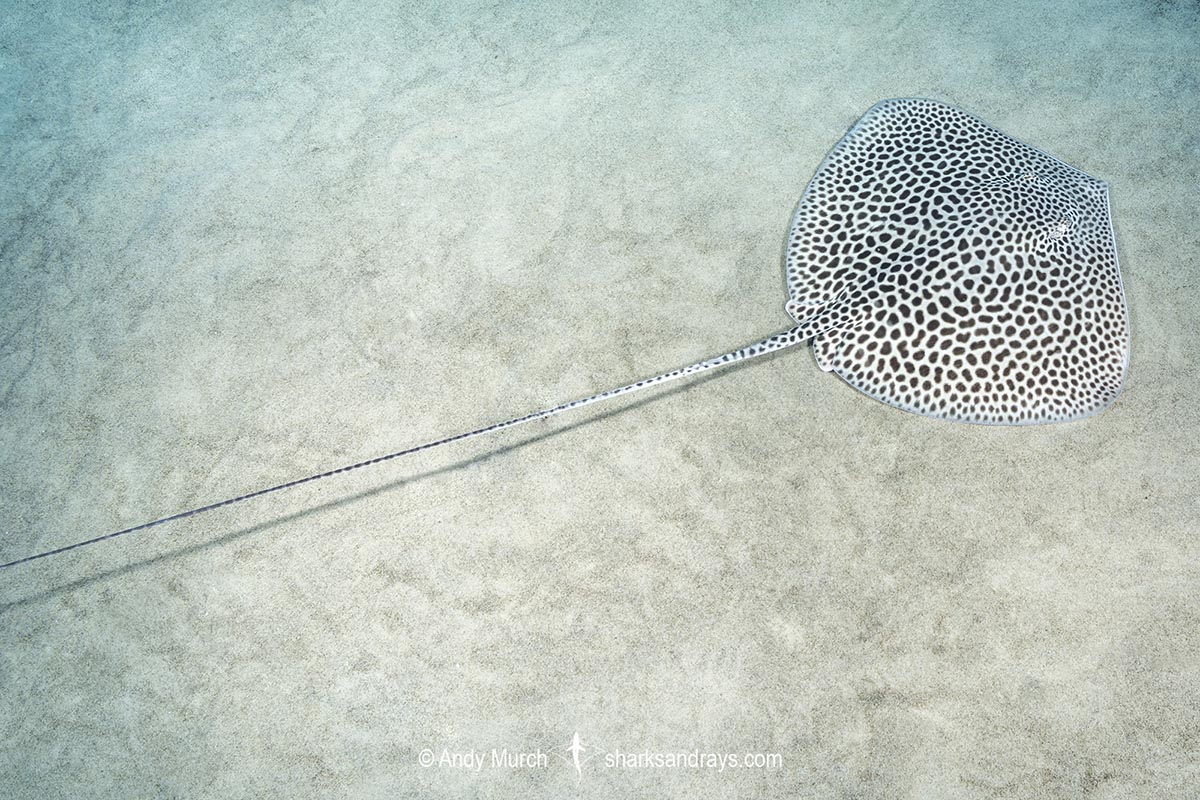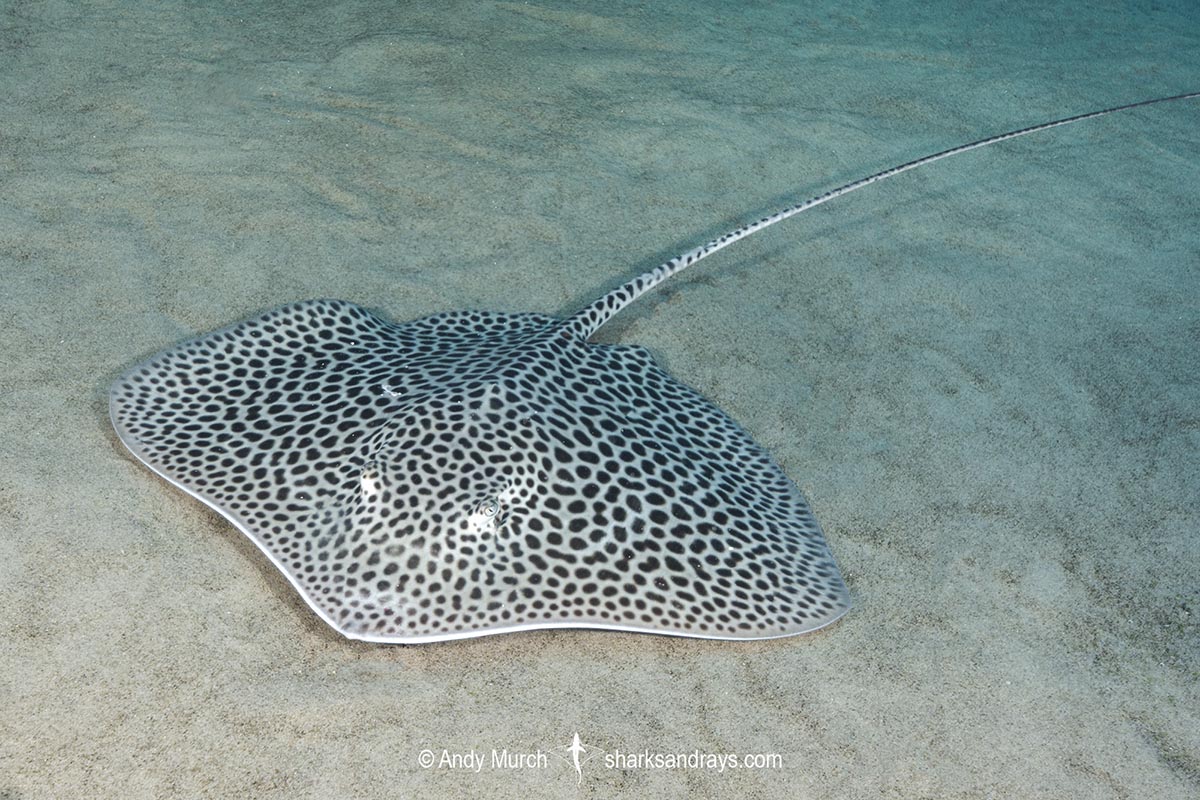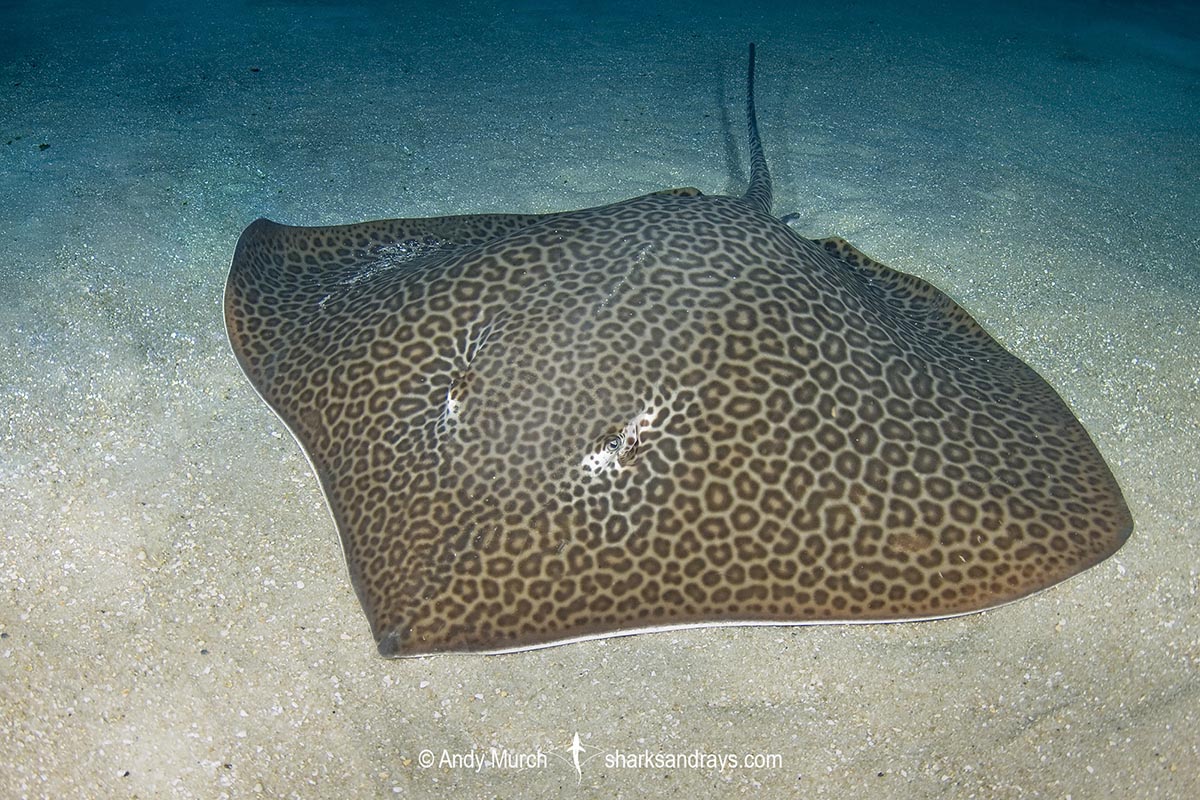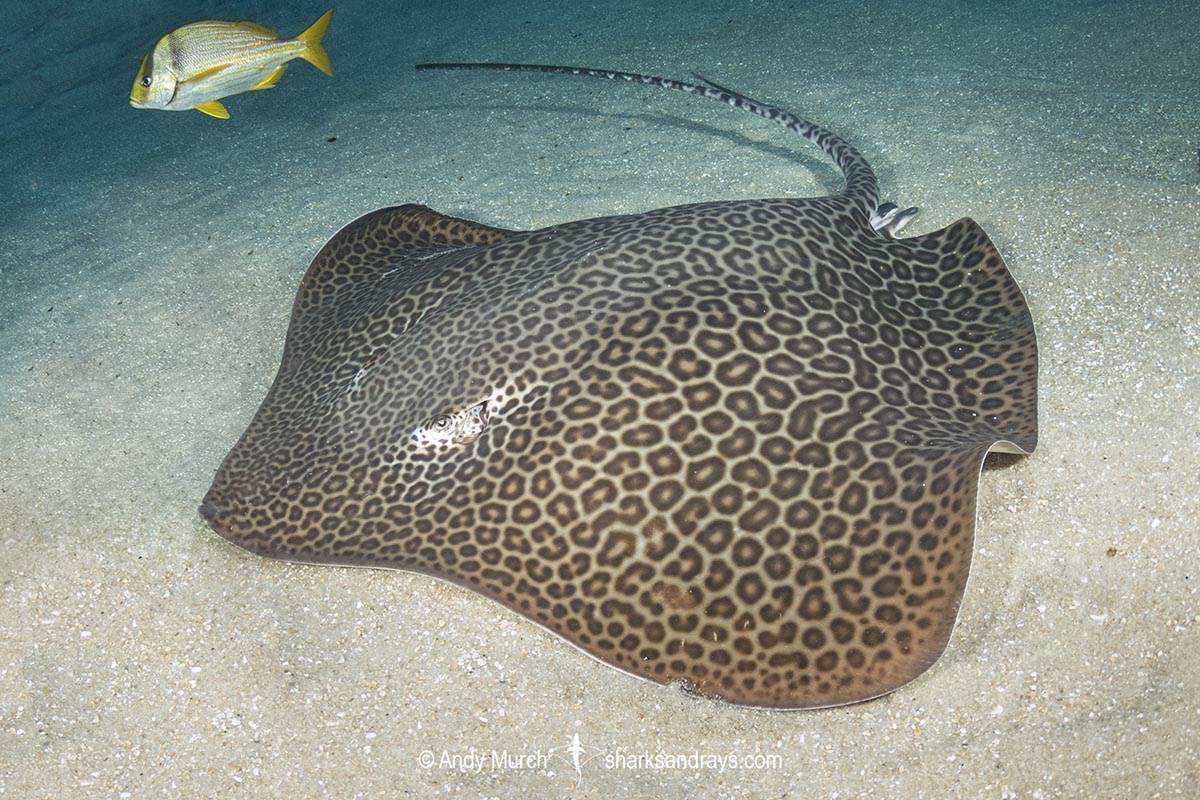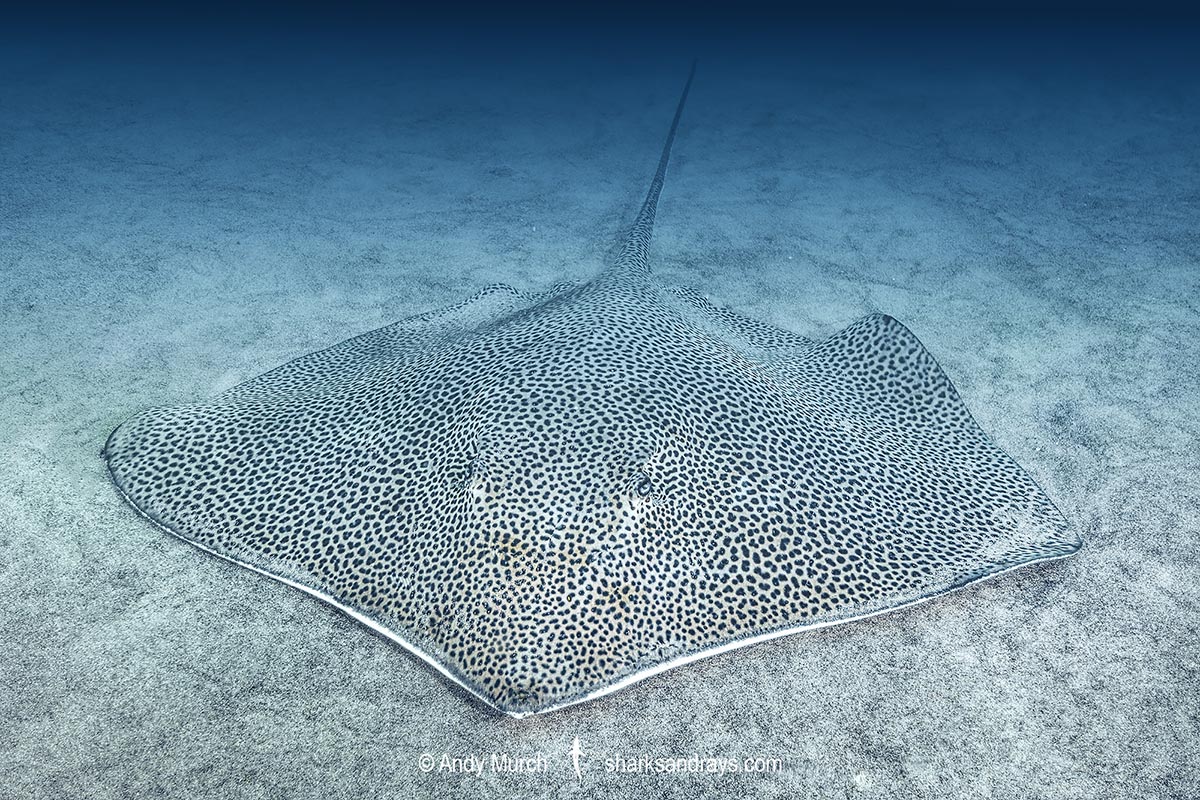Common names
Leopard Whipray.
Binomial
Himantura leoparda.
Synonyms
None.
Identification
A large stingray with a kite-shaped disc that is slightly wider than long. Snout pointed; obtusely angular. Anterior margins of disc concave or almost straight. Pectoral fin apexes narrowly rounded. Pelvic fins short and wide with rounded apexes.
Eyes small and protruding. Snout length 1.8-2.2 x combined eye and spiracle length.
Mouth usually contains 4 oral papillae; 2 in centre and 1 at each side. Weak labial furrows and folds around mouth. Mouth arched. Lower jaw concave at symphysis. Wide, short nasal curtain with a finely fringed margin.
Usually 2 heart shaped thorns on central disc, with up to 13 dermal denticles anteriorly and a row of smaller denticles posteriorly. Well developed denticle band in adults. Tail narrow-based, tapering evenly to caudal sting, then whiplike and filamentous to tip. Tail length (when intact) 2.5-3.7 x disc width. Caudal folds absent. One caudal sting usually present.
Colour
Dorsum whiteish to tan with many dark brown or dark grey spots that form irregular, leopard-like rings. Juveniles usually lighter with large (eye or spiracle sized) black spots. Tail banded beyond sting. Ventrum almost completely white.
Size
Maximum disc width at least 140cm. Disc width at birth approximately 20cm.
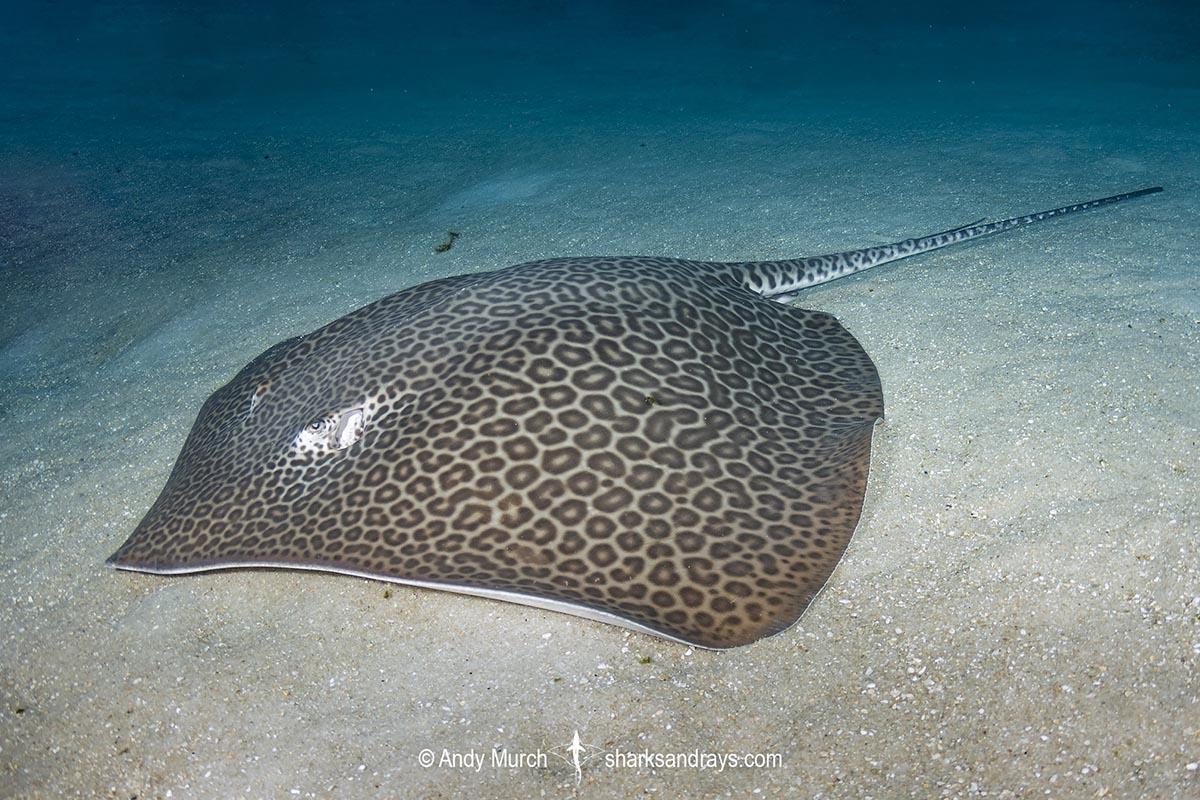
Conservation Status
VULNERABLE
The Leopard Whipray is a targeted species and a bycatch component in trawl, gill nets, hook and line, and longline fisheries. It is retained for its meat and its patterned skins that is made into leather. Overfishing remains high across the species’ entire range, except in Australia. Although no population trend data exists, combined rays data infers significant declines across large parts of the leopard whipray’s range. It is suspected that the Leopard Whipray population has declined by 50–79% in the last 60 years. As well as overfishing, habitat degradation is a factor in this species population losses.
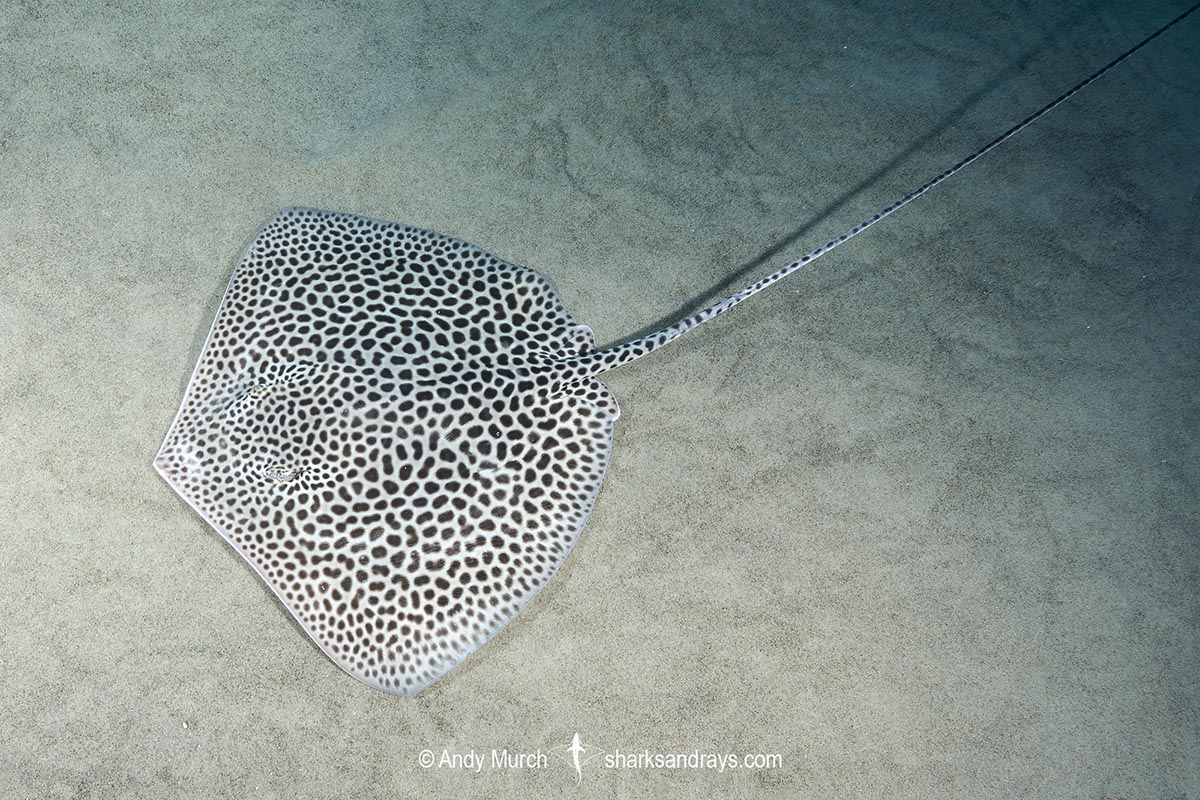
Habitat
Sub-tropical/tropical seas. On soft substrates, sometimes adjacent to reefs. From shallow estuaries to at least 70m.
Distribution
Indian Ocean and west Pacific. Found from South Africa, east Africa, Persian Gulf, India, and throughout Southeast Asia from southern Japan to Northern Australia.
Reproduction
Matrotrophic aplacental viviparity. Litter size unknown.
Diet
The leopard whipray’s diet is unknown but probably consists of invertebrates and small benthic fishes.
Behavior
Sedentary. Spends much of the day resting on the substrate.
Reaction to divers
Shy but approachable with non-aggressive movements. Generally bolts if approached closely.
Diving logistics
Leopard stingrays are probably encountered at numerous dive sites throughout the Indian Ocean and southeast Asia but divers have a hard time identifying the four spotted himantura species from one another so advice on where to find leopard stingrays is currently unavailable.
The problem of positive identification is exacerbated by the regional use of a variety of common names that are applied to different species in different areas. The following names are sometimes applied to all four himantura species: leopard whipray/stingray, reticulated whipray/stingray, coach whipray, and honeycomb whipray/stingray.
Within the area where leopard whiprays are probably present, at the Ad Dimaniyat Islands off the northeast coast of Oman, rays of the himantura species-complex are apparently abundant (Intel Christophe Chellapermal).
What’s new
View our full list of updates
Similar species
Reticulate Whipray A very similar ray with a sympatric range (unconfirmed in Australia). Distinguished by dense covering of small black spots that do not form leopard-like rings.

